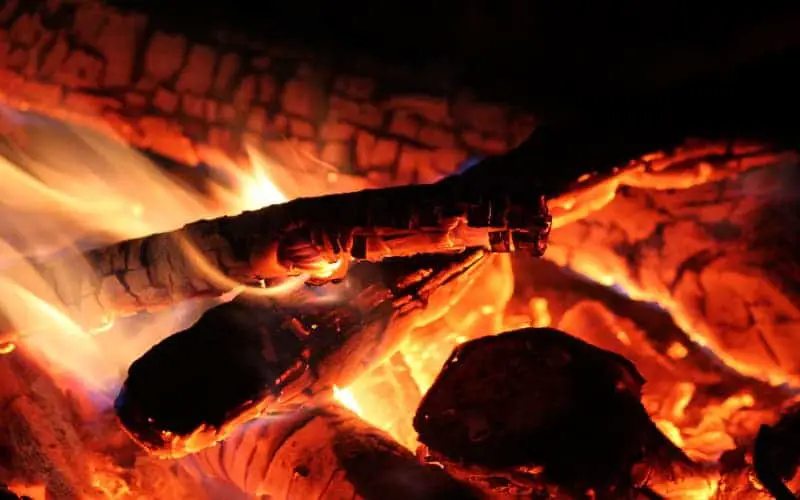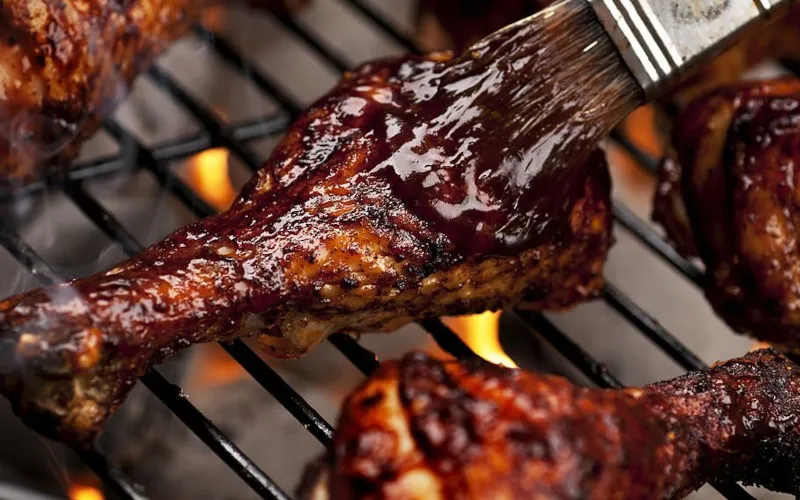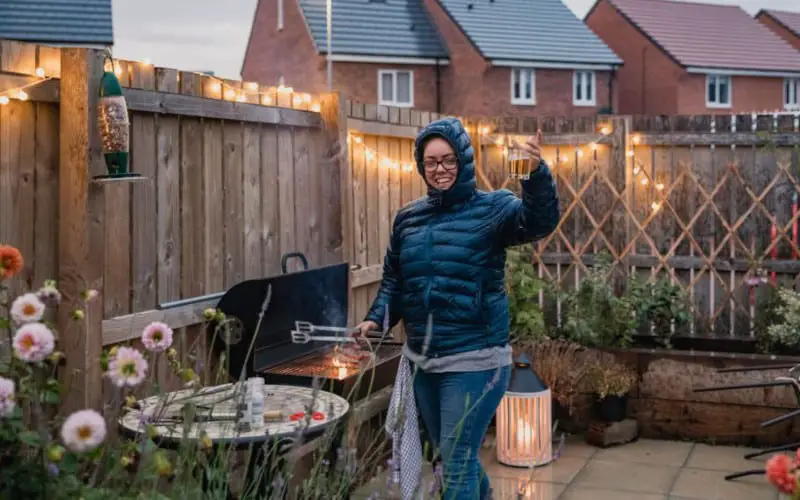I love experimenting with different cooking methods to elevate the taste of my dishes. One of the most important concepts is the difference between direct and indirect heat cooking.
These two methods are crucial in determining your food’s texture, flavor, and doneness.
In this article, I will explain direct and indirect heat cooking and why understanding the difference is vital for achieving the perfect dish.
Let’s get started!
What is Direct Heat?
Direct heat cooking is when food is cooked directly over a heat source, such as a flame or an electric element. The food is placed in direct contact with the heat, which creates a brown, slightly charred surface on the food.
It can result in tender, juicy, and flavorful meats, fish, and vegetables cooked to perfection.
One of the main advantages of direct heat cooking is that it works quickly. When cooking with direct heat, the food is cooked at a high temperature, which means it cooks faster than other methods.
This is why direct heat cooking is perfect for any meal requiring quick cook time and cleanup. Direct heat cooking is also ideal for that beautiful browning and sear everyone loves.
However, direct heat cooking has its disadvantages too. One of them is that it can be challenging to maintain consistent heat levels. When you’re cooking over an open flame, the temperature can easily fluctuate, which can compromise the quality of your dish.
It’s also important to note that direct heat cooking can dry out your food if it’s overcooked. That’s why you must closely monitor your food and ensure you don’t overcook it.
[humix url=”https://electricsmokerhq.com/humix/video/BlxiAlicjaf” float=”1″ autoplay=”1″ loop=”1″]
Common Methods Of Direct Heat Cooking
Grilling
Grilling is one of the most popular ways to cook with direct heat. Grilling requires a grill, which can be fueled by gas, charcoal, or wood. The food is placed directly on the grates of the grill, and the heat from the flames cooks the food.
Broiling
Broiling is another popular method of direct heat cooking. In broiling, the heat source comes from above the food, and it’s cooked within a few inches of the heat source. The broiling process cooks food quickly and creates a crispy crust.
Sautéing
Sautéing is a common cooking technique where food is cooked quickly in a pan over medium-high heat. This method works perfectly when cooking with small pieces of meat, vegetables, or mushrooms.
What is Indirect Heat?
Indirect heat cooking is a cooking technique where food is cooked by heating it indirectly. This means that the food is not in direct contact with the heat source and is instead cooked by being surrounded by heat.
There are many reasons to use indirect heat cooking. First, it’s perfect for large, tough cuts of meat, like brisket or pork shoulder, that must be cooked slowly.
Second, it’s a great method for smoking meats and fish, infusing them with a rich, smoky flavor. Finally, indirect heat cooking is ideal for baking and roasting, as it cooks foods consistently without scorching or burning them.
One of the main advantages of indirect heat cooking is that it’s incredibly versatile. You can use it to cook almost anything, from veggies to meats to fish. It’s a gentle cooking method that won’t damage delicate foods and allows you to cook food perfectly without worrying about burning or undercooking.
However, indirect heat cooking can take time. Because you’re cooking at lower temperatures, it can take hours to cook some foods fully. Additionally, it can be hard to maintain consistent heat levels, especially if you’re cooking with wood or charcoal.
Different Methods to Do Indirect Heat Cooking
Smoking
One of the most popular methods of indirect heat cooking is smoking. Smoking involves heating food at a low temperature over a long period using wood chips or chunks. This method of cooking adds a smoky flavor to the food.
Roasting
Roasting is another popular method of indirect heat cooking. Roasting requires an oven where food is placed on a rack or a baking dish, then baked slowly at a constant temperature.
Baking
Baking is a method that often goes hand-in-hand with roasting. It’s similar in that it’s done in an oven, but baking usually involves covered or crusty food.
Slow Cooking
Slow cooking is cooking food at low temperatures for many hours. It’s typically done in a slow cooker or a Dutch oven.
There are a few things to remember regarding indirect heat cooking. First, make sure you have plenty of time. This is not a quick cooking method; you must be patient.
Secondly, use a good thermometer to monitor the temperature of your food. Finally, don’t be afraid to experiment. This is a great method of cooking to try new recipes and play with flavors.
Things to Consider When Choosing Direct vs Indirect Heat
When choosing the right heat method, a few factors must be considered. The type of food you’re cooking, the desired result, and the available cooking equipment are all important considerations.
Type of Food
Different foods require different cooking methods. For example, a delicate piece of fish might not hold up well to the high heat of direct cooking, while a tough cut of meat might need slow cooking provided by indirect heat.
Vegetables also have different cooking times and requirements, and not all methods work equally well for every type of vegetable.
When considering the type of food you’re cooking, think about the texture, flavor, and doneness you’re trying to achieve. Do you want your steak to be rare, medium, or well done? Do you want your vegetables to be lightly caramelized or soft and tender?
Desired Result
The desired result of your dish will also play a big role in choosing the right heat method. For example, if you’re looking for a crispy exterior on your chicken, you may opt for high-heat methods like grilling or broiling.
If you’re looking for a tender, melt-in-your-mouth roast, you may want to use indirect heat methods like roasting or slow cooking.
Another consideration regarding the desired result is the level of doneness you want in your food. Some methods, like grilling, can be more difficult to control when it comes to doneness, while others, like sous vide, allow for precise temperature control and consistency.
Cooking Equipment
Finally, the available cooking equipment can also impact your chosen heat method. If you don’t have a grill, you won’t be able to grill your food. Likewise, you won’t be able to bake or roast your food if you don’t have an oven.
However, there are often multiple ways to cook the same dish, so don’t let equipment limitations deter you from trying new recipes. For example, if you don’t have a grill, you could use a grill pan on the stove instead.
When it comes to choosing the right heat method, here are a few tips to keep in mind:
- Think about the type of food you’re cooking and the texture, flavor, and doneness you want to achieve.
- Consider the desired result of your dish, such as crispy skin or tender meat.
- Evaluate the cooking equipment you have available, and choose a method that is compatible with it.
- Don’t be afraid to experiment with different methods and techniques – that’s how you’ll find your new favorite recipes.
Conclusion
It’s essential to understand the different heat methods and their characteristics. Direct heat cooking works great with small, thin cuts of meat, while indirect heat cooking is best for larger cuts that require longer cooking times.
We can maximize our ingredients by choosing the right method and bringing out their natural flavor and texture.
It’s also important to remember that there’s more than one way to achieve a desired result. For example, you can cook a whole chicken using various methods, like roasting, grilling, or smoking.
The beauty of cooking is that it’s an experiment, and you can try different methods to see which works best for you and your dish.
Whether grilling a steak or roasting a chicken, understanding the different heat methods and choosing the right one can transform your dishes from good to great.
With practice and experimentation, you’ll soon be a master of direct and indirect heat cooking, creating flavorful and delicious meals that will impress your friends and family.
Happy cooking!





